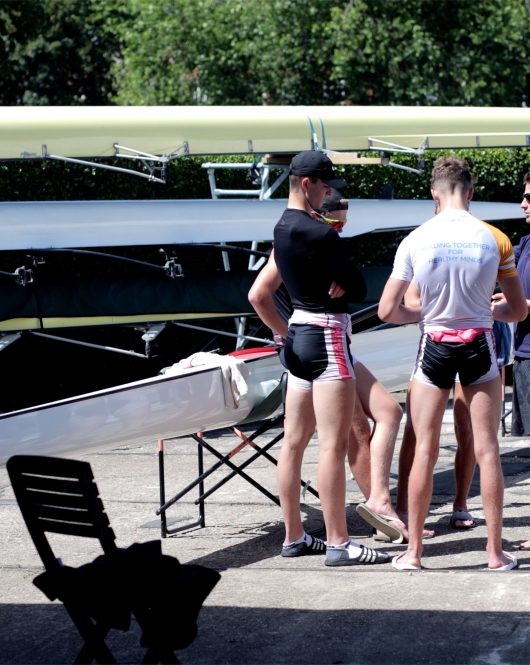Olympic Gold Medal Winning Coach, Robin Williams, discusses coaching styles. Exploring the roles and behaviours of a successful coach. How they have to understand their position and the impact they have on their athletes.
Plus to explain how data can help build trust and motivate athletes to make changes if the coach knows how to interpret the data and is able to deliver it to the athletes so they feel empowered by it.
How Sports Coaching Styles Unlock Athletic Performance
We all thirst for more information and knowledge to do our jobs better but does this make you a better sports coach? If a hundred coaches could all follow some imaginary gold medal manual would they all get the same results? Absolutely not – some would be great, some average and a few maybe quite weak. You can apply the same test to athletes too: a hundred top sportspeople of equal physiology and following exactly the same training programme will not all end up as winners. Some will interpret the programme better than others and be more stimulated by it, and some will get better value from their training environment and their coach. So what is it that makes the difference? Why do groups stop chatting and pay attention when certain coaches speak, but not for others? Why do underdog teams believe the coach when he says “you can win this”? The answers lie in coaching style, leadership and the chemistry which mobilises performance in other people. Coaching style turns the ‘what to do’ in to ‘how to do it’ and turns performance theory into performance reality. The challenge is how to develop your coaching style to suit the team you coach.
Role of a Coach
Coaches come in many forms of course and so do coaching styles: there are the Leader-coaches like David Brailsford of British Cycling, David Tanner in Rowing, Bill Sweetenham for Swimming: in their roles as performance directors these individuals began by creating the environment for success by toughening up aspirations, planning and laying the framework, time-scales, strategies, and methodologies necessary. This set the tone and mind-set of coaches and athletes alike. Their leadership style was direct and decisive and with millions of pounds of UK Sport-managed National Lottery funding at stake this is perhaps not surprising. In trying to avoid the mistakes of the past and initiate a medal-winning pathway for the future this style is often seen as autocratic because they have to communicate in very certain terms until everyone understands and makes a buy-in to the new regime. Some of the session coaches displayed this approach too because there is a strong sense of accountability and the need to deliver results. All three examples found success but there were also occasional allegations of bullying coaching styles from disaffected athletes because, for some, it over-challenges their comfort zone.
There are also Manager-coaches, Trainer-coaches, Technical-coaches, Pastoral coaches and plenty more sub-divisions of ‘Coach’ each bringing its own nuances when it comes to coaching style. Coaches working in a school or community club, for instance, will often need a much more nurturing approach because there is a strong duty of care, especially with juniors, and the priorities are different from mature performance athletes. The remit could be as simple as providing recreation, social or healthy activities, so the coaching style needs to fit the group of people and we need to understand the athlete’s motivations and goals and not assume everybody is targeted on winning. Nevertheless there is common ground across all coaching roles; all coaches help glue the working parts of a team together organisationally and usually culturally too. According to the International Olympic Committee (IOC)’s Top 10 Qualities of a Sports Coach they rank things like Leading by Example, Sharing knowledge, Motivating, Energising, Understanding the Athlete, Listening, Integrity, and so on as fundamental, regardless of coaching style.
Autocratic, Democratic, Holistic Coaching Styles
The theories about leadership styles have been around for a hundred years and, for instance, the University of Kansas Department of Health, Sport and Exercise Science classifies three coaching styles of Autocratic, Democratic, and Holistic, stemming originally from studies by Kurt Lewin, an American-German psychologist back in the 1930’s. Empirically these makes sense because we can readily see examples around us of each type and each style has its pro’s and con’s.
Autocratic coaches as mentioned bring the beneficial qualities of certainty, clarity, decisiveness and everyone knows where they stand. Plenty of athletes respond well to this disciplined approach it can work quite well with larger teams and squads, almost creating a combat unit mind-set; the famous US football coach Vince Lombardi had this background and used it very successfully. There are risks of course – some athletes don’t like the feeling of blind adherence to a programme and can feel as though they are handing their lives over to the coach who in turn has total control. It needs a lot of trust and if they don’t understand the direction of the programme they probably will feel ‘bullied’ into complying.
Democratic coaches are guiders and influencers, and aim to involve the athletes more closely with decisions so they share some ownership of the process they are following. This coaching style does not have to sacrifice authority – the coach can still be the leader but can create a sense of collective mission because athletes are performing collaboratively and have entered in to a sort of joint contract to uphold all the agreed goals and processes. Danny Kenny was coach to British Women’s Hockey and ‘The Talent Lab’ by Owen Slot describes how one of Kenny’s learnings after the 2008 Beijing Olympics was to move towards more a collaborative coaching style which, given the team structure and team dynamics of a Hockey side compared to an individual swimmer or runner, is perhaps not surprising. It appears that there are some subtle gender differences in this area – women tend to have stronger nurturing tendencies than men and like to achieve by consensus in team situations, but it is dangerous to generalise! Another danger to guard against with a democratic style is allowing too much democracy of course, because there is the risk that the athletes want to debate everything which could slow progress too much, so it is very much a question of striking a balance.
The third coaching style can be termed Holistic or Laissez-faire. It is much more hands off with the coach making fewer outright decisions and the athlete being much more in control. This style might work well with a very experienced athlete, like a top Tennis player or Golfer who needs a coach as an advisor, sounding board, and a source of balance and perspective when the next step is not obvious. Of course we do not need to pigeon hole coaches in to just one of the three; most coaches will be a mix of them all and with experience can selectively move between the styles.
Importance of Flexibility
A laissez-faire coach would instantly take firm control of proceedings if he spotted a danger risk, and an autocratic style is not necessarily showing weakness if a one on one conversation is required. The timeline is relevant too – my relationship with the GB Women’s Rowing Pair who won Gold in the London 2012 and Rio 2016 Olympics was like this; the fixed elements like training volumes, testing, selection strategy and competitions were provided by the Head Coach, Paul Thompson, which allowed me as the crew coach to nuance the detail and how to get 100% from his programme for this particular crew. Over six years the relationship with Helen Glover and Heather Stanning moved from more autocratic, like a teacher-student style, towards democratic and holistic as they got older and more experienced. The aim of all good coaching is surely to ultimately write yourself out of a job! In other words the coach equips the team with everything they need physically, technically and mentally to handle competition so when they go out on the field or the water they are fully self-sufficient.
Coaching Personality
So how to develop your coaching style? It would be easy to assume that your personality IS your coaching style; serious, fun, friendly, distant or whatever. Some autocratic coaches expect the athlete to adapt to them and get used to it, others see the value in understanding the learning style of their athletes and positively use the peer interactions as part of the process. England Football Coach Sven-Goran Eriksson used to talk about David Beckham and others as his ‘cultural architects’ meaning that athletes within the team can have beneficial influence on others and do some of the coach’s job in setting the tone and expectations. This can empower and motivate athletes and mean the head coach does not have to be the one constantly laying down rules. It is a tough judgement to work out where the control needs to be, completely with the coach, partly with coach and the athletes, or mostly with the athletes but good coaches will have or earn the ability to adjust this balance with skill. In fact we all have it to some extent: if talking to a young child, a pushy salesman, a work colleague or a close friend we would naturally adjust our communication style to suit. The bottom line is this: the more we know ourselves the better we are equipped to help others.
Traditional versus Data-informed Approach
We do tend to get better with age at understanding our own personality and being tolerant of others but it can still be a slow and subjective evolution to reach a point where it is useful to our coaching. Sport and business nowadays speed up the process by using psychometric profiling systems like Myers-Briggs or Insights programmes to give the coach and athlete a clear picture of their personalities, emotional tendencies, who they relate to, clash with, and why. It fits well with the descriptions of coaching styles mentioned earlier because it helps explain why we gravitate towards a certain one. Importantly they also give you tools to adjust your coaching style: “In a stress situation you may react by….” or “when communicating with this kind of person make sure you …” which helps develop the emotional intelligence to adjust your coaching style appropriately. It may sound to some a bit ‘touchy-feely’ but has been shown to be effective in at least two Olympic medal performances I can think of. Team selection is another danger area where emotions and subjectivity could interfere with the coach’s decisions and the film ‘Moneyball’ (2011) tells the story of Billy Bean, the baseball coach. His Oakland team won major titles, despite being underdogs, by trusting statistical analysis to guide his selections and tactics rather than his own whims.
So while coaching style is what differentiates the hundred coaches with the same theoretical knowledge, it itself is benefitting from more data and an information based approach! Focussing around objective information can point the coach towards a much more effective coaching style, so improving it is perhaps less passive evolution and more conscious engineering.
View more content like this

How to improve training following a defeat | Interview with rowing coach James Loveday
In June 2019 we caught up with Leander Club Junior Coach James Loveday to learn more about their program, how education plays a major role
The Importance of Streamlined Communication in Team Sports
In any team, communication is essential for success, and as we know it’s no different for us as Coaches. However, just as in other industries, often
What strength quality does your rower/crew need to improve their speed?
How can strength & conditioning emphasize different strength qualities to improve performance? This article provides a framework and recommendations for the coach and rower to address




